Related Research Articles

The Symphony No. 9 in E minor, "From the New World", Op. 95, B. 178, popularly known as the New World Symphony, was composed by Antonín Dvořák in 1893 while he was the director of the National Conservatory of Music of America from 1892 to 1895. It premiered in New York City on 16 December 1893. It is one of the most popular of all symphonies. In older literature and recordings, this symphony was – as for its first publication – numbered as Symphony No. 5. Astronaut Neil Armstrong took a tape recording of the New World Symphony along during the Apollo 11 mission, the first Moon landing, in 1969. The symphony was completed in the building that now houses the Bily Clocks Museum in Spillville, Iowa.

The Symphony No. 6 in B minor, Op. 74, also known as the Pathétique Symphony, is Pyotr Ilyich Tchaikovsky's final completed symphony, written between February and the end of August 1893. The composer entitled the work "The Passionate Symphony", employing a Russian word, Патетическая (Pateticheskaya), meaning "passionate" or "emotional", which was then translated into French as pathétique, meaning "solemn" or "emotive".
Symphony No. 12 in D minor, Op. 112, subtitled The Year 1917, was composed by Dmitri Shostakovich in 1961. He dedicated it to the memory of Vladimir Lenin. Although the performance on October 1, 1961, by the Leningrad Philharmonic Orchestra conducted by Yevgeny Mravinsky was billed as the official premiere, the actual first performance took place two hours earlier that same day in Kuybyshev by the Kuybyshev State Philharmonic Orchestra conducted by Abram Stasevich.
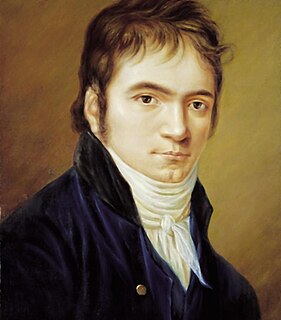
The Symphony No. 2 in D major, Op. 36, is a symphony in four movements written by Ludwig van Beethoven between 1801 and 1802. The work is dedicated to Karl Alois, Prince Lichnowsky.
An unfinished symphony is a fragment of a symphony, by a particular composer, that musicians and academics consider incomplete or unfinished for various reasons. The archetypal unfinished symphony is Franz Schubert's Symphony No. 8, written in 1822, six years before his death. It features two fully orchestrated movements. While it seems clear from sketches that Schubert set out to create a traditional four-movement symphony, this has been the subject of endless debate. Schubert wrote the symphony for the Graz Musical Society, and gave the manuscript to his friend Anselm Hüttenbrenner, in his capacity as its representative. However, Hüttenbrenner did not show the score to the society at that time, nor did he reveal the existence of the manuscript after Schubert died in 1828, but kept it a secret for another 37 years. In 1865, when he was 76, Hüttenbrenner finally showed it to the conductor Johann von Herbeck, who conducted the extant two movements on 17 December 1865 in Vienna, adding the last movement of Schubert's third symphony as the finale. Music historians and scholars then toiled to "prove" the composition was complete in its two-movement form, and indeed, in that form it became one of the most popular pieces in the late 19th century classical music repertoire, and remains one of Schubert's most popular compositions.
The Symphony No. 3 in C minor, Op. 78, was completed by Camille Saint-Saëns in 1886 at what was probably the artistic peak of his career. It is popularly known as the Organ Symphony, even though it is not a true symphony for organ but simply an orchestral symphony where two sections out of four use the pipe organ. The composer inscribed it as: Symphonie No. 3 "avec orgue".

Sir Edward Elgar's Symphony No. 1 in A♭ major, Op. 55 is one of his two completed symphonies. The first performance was given by the Hallé Orchestra conducted by Hans Richter in Manchester, England, on 3 December 1908. It was widely known that Elgar had been planning a symphony for more than ten years, and the announcement that he had finally completed it aroused enormous interest. The critical reception was enthusiastic, and the public response unprecedented. The symphony achieved what The Musical Times described as "immediate and phenomenal success", with a hundred performances in Britain, continental Europe and America within just over a year of its première.
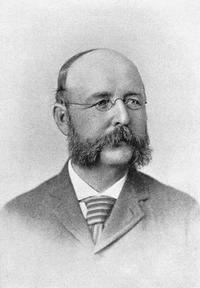
John Knowles Paine was the first American-born composer to achieve fame for large-scale orchestral music. The senior member of a group of composers collectively known as the Boston Six, Paine was one of those responsible for the first significant body of concert music by composers from the United States. The Boston Six's other five members were Amy Beach, Arthur Foote, Edward MacDowell, George Chadwick, and Horatio Parker.
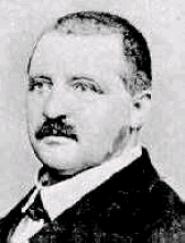
Anton Bruckner's Symphony No. 1 in C minor, WAB 101, was the first symphony the composer thought worthy of performing, and bequeathing to the Austrian National Library. Chronologically it comes after the Study Symphony in F minor and before the "nullified" Symphony in D minor. The composer gave it the nickname Das kecke Beserl, and conducted its 1868 premiere. Much later, after Bruckner was granted an honorary University of Vienna doctorate in 1891, he dedicated the 1890 version of the work to that institution.
The Symphony in C major by German composer Robert Schumann was published in 1847 as his Symphony No. 2, Op. 61, although it was the third symphony he had completed, counting the B-flat major symphony published as No. 1 in 1841, and the original version of his D minor symphony of 1841. It is dedicated to Oscar I, king of Sweden and Norway.

The Symphony No. 1 in B♭ major, Op. 38, also known as the Spring Symphony, is the first completed symphonic work composed by Robert Schumann.
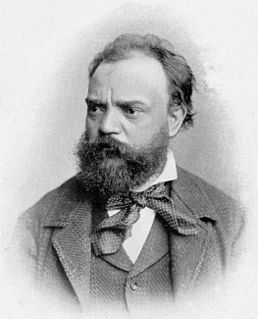
The Symphony No. 3 in E♭ major, Op. 10, B. 34, is a classical composition by Antonín Dvořák.
The Symphony No. 2 in B-flat major, Op. 4, B. 12 was composed by Antonín Dvořák between August and October 1865. Dvořák sent the score to be bound, but could not pay the binder, who kept the score. A friend of his, with whom he was sharing lodgings, Moric Anger, lent Dvořák the money to pay off the binder and retrieve his score. Later, when Anger asked for repayment of the debt, Dvořák was again unable to pay, so Anger took the score as security and only returned it when Dvořák retracted a previous threat to destroy it, something Anger had always advised against. In 1887 Dvořák revised the score, thinning out the rather dense orchestration.
The Symphony No. 1 in C minor, B. 9, subtitled The Bells of Zlonice, was composed by Antonín Dvořák during February and March 1865. It is written in the early Romantic style, inspired by the works of Ludwig van Beethoven and Felix Mendelssohn. Dvořák never heard or revised the symphony, because the completed work was lost during his lifetime. It premiered in 1936.
The Symphony No. 3 in C major of the Swedish composer Franz Berwald, nicknamed the Singulière, was written in 1845. It is scored for 2 flutes, 2 oboes, 2 clarinets, 2 bassoons, 4 horns, 2 trumpets, 3 trombones, timpani and strings. It is about a half-hour in length and is in three movements:
- Allegro fuocoso in C major
- Adagio - Scherzo - Adagio
- Finale: Presto in C minor
Symphony No. 1 in C minor, is the first symphony by American composer John Knowles Paine.
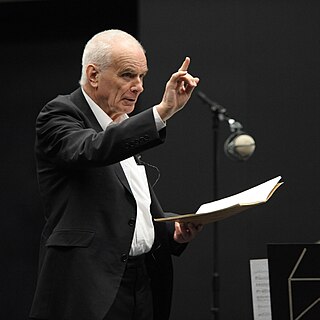
The Symphony No. 2 by Peter Maxwell Davies was commissioned by the Boston Symphony Orchestra in celebration of its centenary, and was composed in 1980. Seiji Ozawa conducted the world premiere with the BSO on 26 February 1981 at Symphony Hall, Boston. The same forces performed the New York premiere on 4 March that year at Carnegie Hall.
Symphony No. 3 in F major, Im Walde, was composed by Joachim Raff in Wiesbaden in 1869 and was premiered in 1870 in Weimar. Along with his Fifth Symphony, it was one of his most successful and frequently performed works during his lifetime and it earned him a reputation as a symphonist. An American critic named it "the best symphony of modern times" while Hans von Bülow described the symphony's success as "colossal". It was published in 1871 by Kistner of Leipzig. A typical performance lasts for about 45 minutes.
Symphony No. 1 in G minor, "Sérieuse", is an orchestral work by Swedish composer Franz Berwald. It was premiered on December 2, 1842 in a concert at the Royal Opera, Stockholm given by the Swedish Royal Court Orchestra conducted by the composer's cousin Johan Fredrik Berwald. This first performance was not a success, leading to this symphony being the only one of Berwald's mature symphonies to be performed during his lifetime;.
Symphony No. 4 in E-flat major is an orchestral work by Swedish composer Franz Berwald written in 1845. Berwald considered naming the symphony "Sinfonie naïve" but the autograph score is simply inscribed "No. 4 in E flat". Berwald attempted to interest French composer/conductor Daniel Auber in premiering the symphony but it had to wait until April 9, 1878 when it was finally given a first performance under Berwald champion Ludvig Norman.